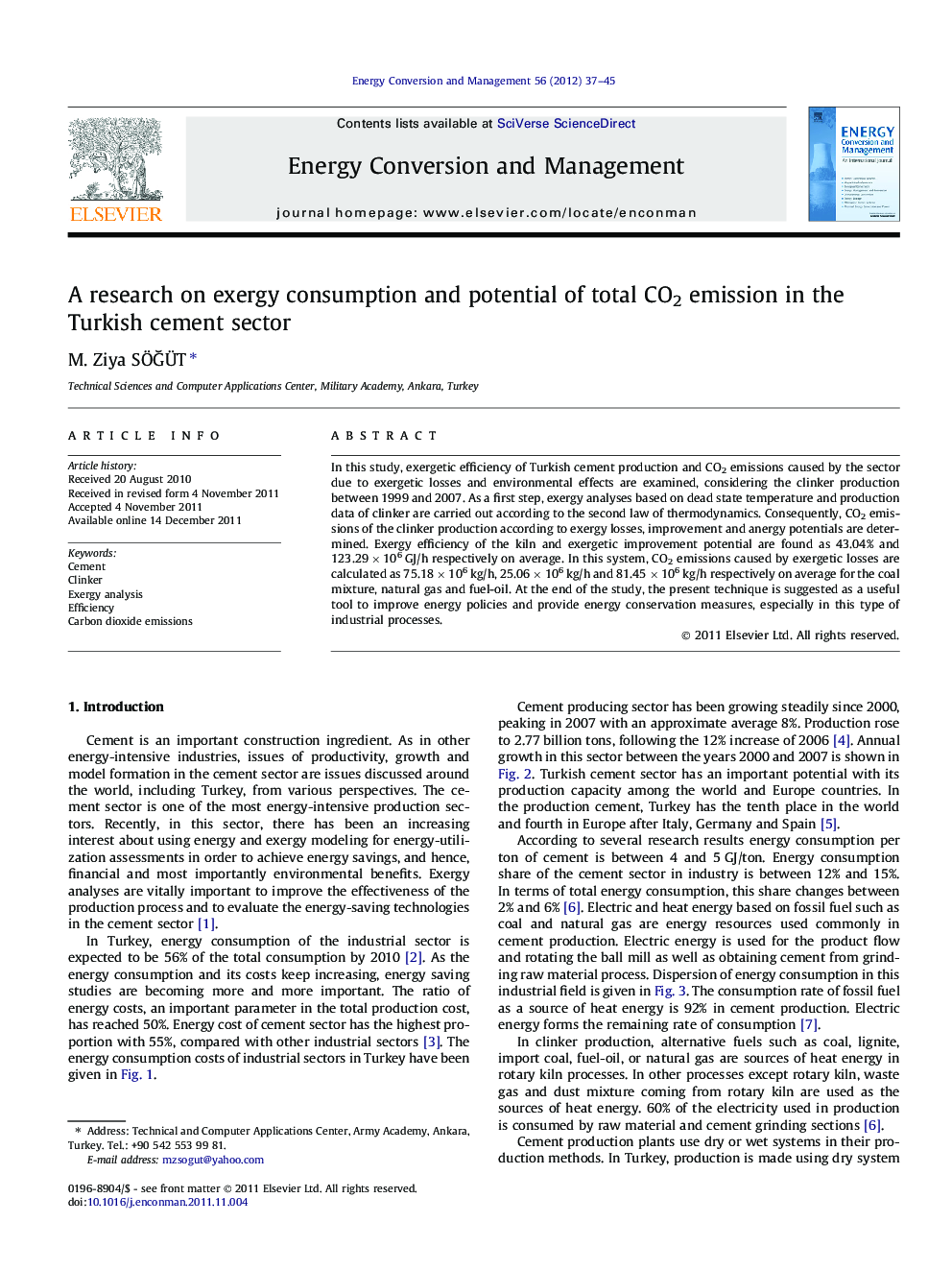| Article ID | Journal | Published Year | Pages | File Type |
|---|---|---|---|---|
| 764292 | Energy Conversion and Management | 2012 | 9 Pages |
In this study, exergetic efficiency of Turkish cement production and CO2 emissions caused by the sector due to exergetic losses and environmental effects are examined, considering the clinker production between 1999 and 2007. As a first step, exergy analyses based on dead state temperature and production data of clinker are carried out according to the second law of thermodynamics. Consequently, CO2 emissions of the clinker production according to exergy losses, improvement and anergy potentials are determined. Exergy efficiency of the kiln and exergetic improvement potential are found as 43.04% and 123.29 × 106 GJ/h respectively on average. In this system, CO2 emissions caused by exergetic losses are calculated as 75.18 × 106 kg/h, 25.06 × 106 kg/h and 81.45 × 106 kg/h respectively on average for the coal mixture, natural gas and fuel-oil. At the end of the study, the present technique is suggested as a useful tool to improve energy policies and provide energy conservation measures, especially in this type of industrial processes.
► Exergetic efficiency and CO2 emissions caused by the Turkish cement sector is examined. ► CO2 emissions of the clinker production caused by exergy losses, improvement and anergy potentials are determined. ► Average exergy efficiency of the kiln and improvement potential are found as 43.04% and 123.3 × 106 GJ/h respectively. ► For the coal mixture and natural gas, CO2 emissions are calculated as 75.18 × 106 and 25.06 × 106 respectively. ► The present technique is suggested as a useful tool developing energy policies and providing energy conservation measures.
